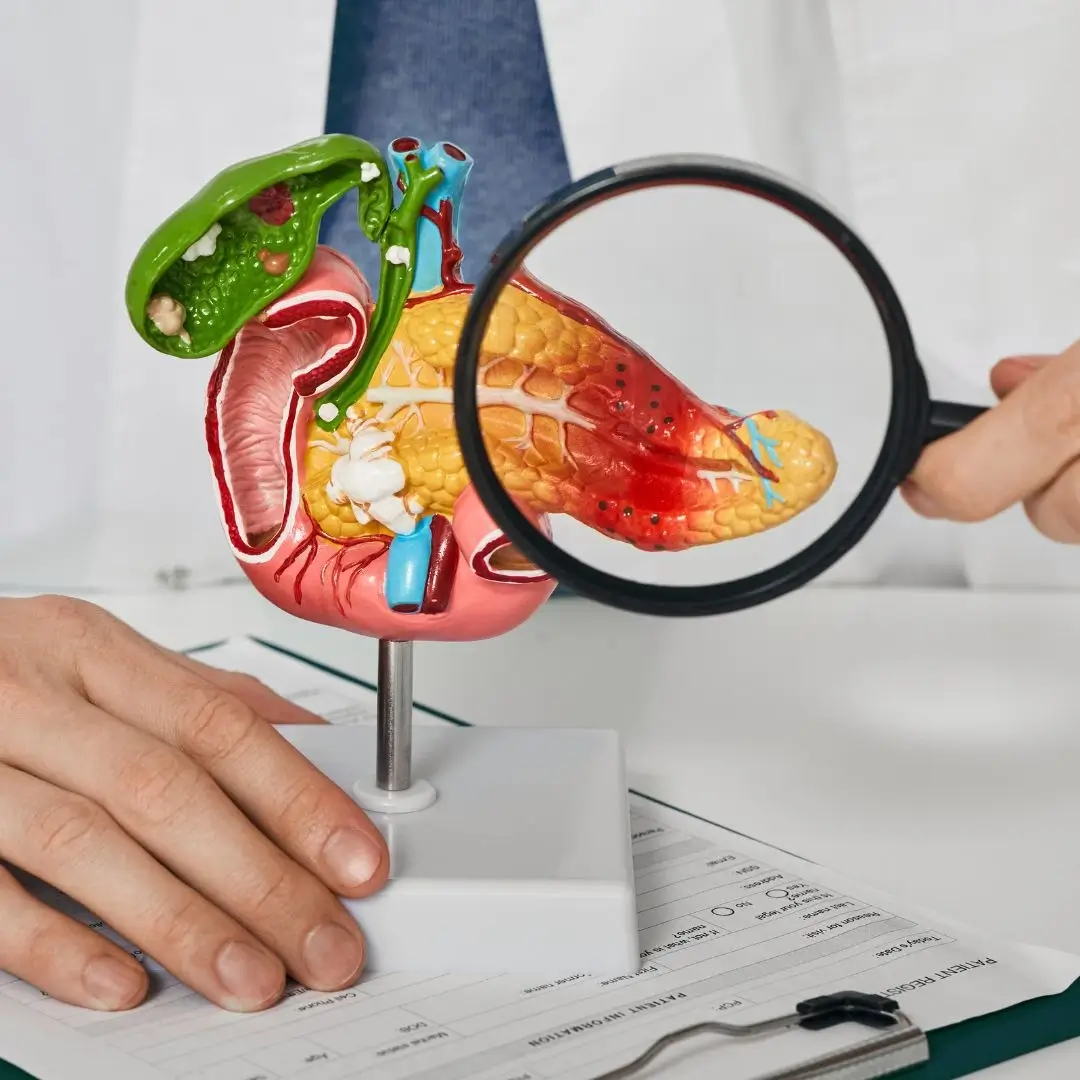Frequently Asked Questions
Bile duct diseases include conditions that affect the bile ducts, such as cholangitis, biliary strictures, bile duct stones, and cholangiocarcinoma.
Causes include gallstones, infections, injuries from surgery, tumors, and autoimmune conditions like primary sclerosing cholangitis.
Symptoms include jaundice, abdominal pain, dark urine, pale stools, itching, and fever.
It is diagnosed using blood tests, imaging (ultrasound, MRCP), and procedures like ERCP or liver biopsy.
ERCP (Endoscopic Retrograde Cholangiopancreatography) is a procedure to diagnose and treat bile duct disorders using a scope and contrast dye.
They are often removed using ERCP or surgery in complex cases.
Cholangitis is a serious bacterial infection of the bile ducts, typically caused by obstruction like a stone or stricture.
Yes, if left untreated, they can lead to liver damage, infection, and bile duct cancer.
Treatments include endoscopic dilation, stenting, or surgical bypass of the affected duct.
Yes, treatment may include surgery, chemotherapy, radiation, or liver transplantation in select cases.
Not always. Many conditions can be managed with minimally invasive endoscopic procedures.
Yes, chronic obstruction or infection can lead to liver damage or cirrhosis.
Avoid alcohol, follow a liver-friendly diet, and maintain regular follow-up care with your hepatologist or GI specialist.
Preventing gallstones, avoiding liver toxins, and early treatment of infections can reduce the risk.
Some conditions like primary sclerosing cholangitis may have genetic links, but most are acquired.

